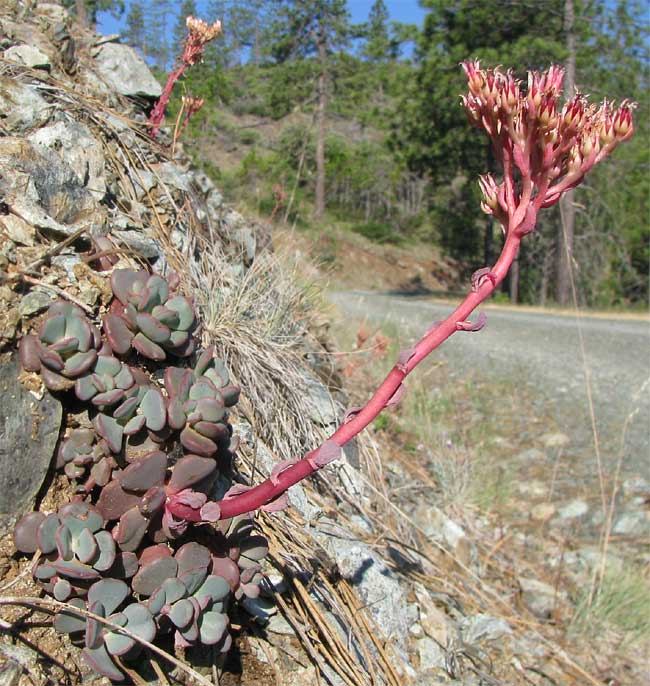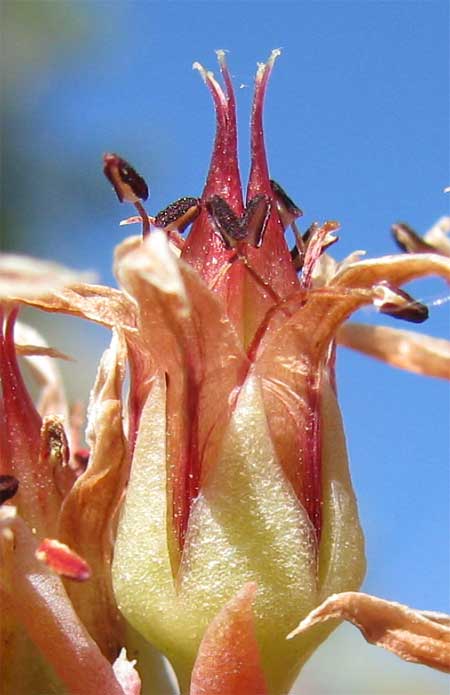Excerpts from Jim Conrad's
Naturalist Newsletter

from the the July 12, 2009 Newsletter, issued from the Siskiyou Mountains west of Grants Pass, Oregon:
ROSEFLOWER STONECROPS
At higher elevations in this area where serpentine rock emerges from roadcuts and cliff faces there's a fairly common succulent plant that would be a star in any rock garden. You can see its pebble-like leaves and long-stemmed, pink, claw-like cluster of flowers above.
That's the Roseflower Stonecrop, SEDUM LAXUM var LAXUM, an endemic growing naturally only in California and Oregon. Notice how leaves of nonflowering shoots form stemless rosettes of thick, smooth leaves that are so well camouflaged that they're easy to overlook. You can see a close-up of a flower below:

At the blossom's base arises a normal calyx with five sharp, greenish-yellow, erect, tooth-like sepals. Inside the calyx and between the sepals emerge somewhat longer reddish petals joined at their bases. Ten stamens with blackish, pollen-filled anthers project from the corolla, and then in the center you see five slender, red, pointy things rising skyward. Though most flowers have just one pistil, those are the tops of five female pistils, a pistil being composed of a stigma, style and ovary. The pistil's tip-top is sort of fuzzy and pale; that's the stigma where pollen germinates. The slender neck below the stigma is the style, and then the ovary is the thicker part below. Ovules inside the ovary will mature into seeds and the ovary into a fruit.
Sedum laxum is a variable species with three varieties recognized. Ours is the typical one, the other two being rarer. In the June 7th Newsletter I profiled another Sedum species, Sedum spathulifolium, one found in moister environments, and you might enjoy comparing our present Sedum laxum with that one. It's at http://www.backyardnature.net/n/h/stonecrp.htm.